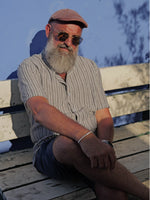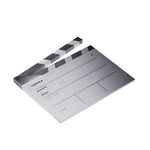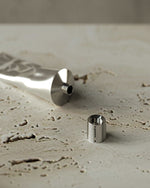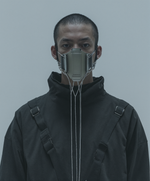25.06.19 in inspirations
Etienne-Louis Boullée
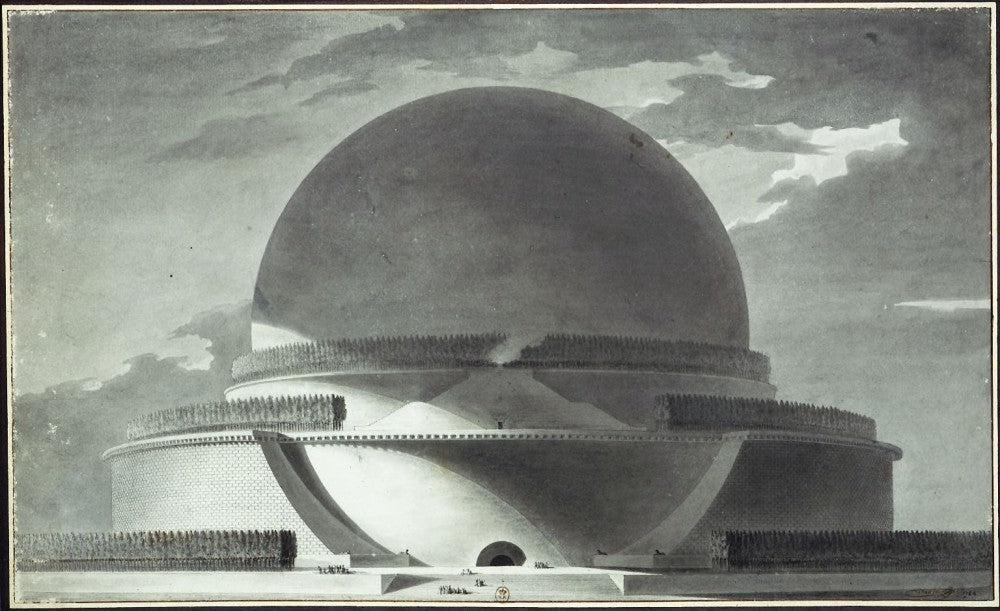
Architect, theoretician, brilliant designer, artist-philosopher, Etienne-Louis Boullée (1728-1799) left us a legacy of several architectural achievements: the Hôtel de Montville, the Hôtel Alexandre (known as Soult), the Château de Chaville, the Hôtel de Pernon, the Hôtel de Brunoy... However, the one who wanted to be a painter contributed to the advent of a greater good by teaching architecture and its objective. His need to transmit and explore architecture will make him abandon the practice in favor of projects that will ultimately never see the light of day, even if they continue to inspire LE GRAMME and contemporary architects like Aldo Rossi.
Boullée's work is considered a utopian architecture, with a character - for the time at least - unrealizable. Boullée's vision therefore takes precedence over any realistic character; it rather nourishes an ideal of creation in the service of society. Each project imagined by the visionary Boullée aspires to the well-being of humanity. At the end of the Age of Enlightenment, art - whether painting, sculpture or architecture - aims to be moral and therefore overturns all aesthetic codes.
Boullée will always be at the confluence of two radically opposed trends: the academicism in which he was immersed and his desire for a revolutionary aesthetic, between rationality and artistic sentimentalism. These projects reinvent the Bourbon Palace, the Mint, the Opera, the Palace of Versailles and the National Library. He even offers designs for a metropolis and a cenotaph imagined for Newton. Characterized by shapes that are both refined and geometric as well as the repetition of elements, each Boullée project echoes the aesthetic of LE GRAMME. Bold and revolutionary to say the least, they could have cost Etienne-Louis his head in these complicated times. His architecture book in which he advocates neoclassicism was not published until 1953.
Boullée's relationship to light (which precedes the applied reflections of Le Corbusier), his play of shadow and light also finds resonance in LE GRAMME which considers the distribution of light and the relationship to metal as one of the foundations of creative thinking.
LE GRAMME shares Boullée's quest for the absolute, the search for a form of universality to better touch sensibilities, with one difference: the le gramme project with 10 collections has become reality.
Boullée's work is considered a utopian architecture, with a character - for the time at least - unrealizable. Boullée's vision therefore takes precedence over any realistic character; it rather nourishes an ideal of creation in the service of society. Each project imagined by the visionary Boullée aspires to the well-being of humanity. At the end of the Age of Enlightenment, art - whether painting, sculpture or architecture - aims to be moral and therefore overturns all aesthetic codes.
Boullée will always be at the confluence of two radically opposed trends: the academicism in which he was immersed and his desire for a revolutionary aesthetic, between rationality and artistic sentimentalism. These projects reinvent the Bourbon Palace, the Mint, the Opera, the Palace of Versailles and the National Library. He even offers designs for a metropolis and a cenotaph imagined for Newton. Characterized by shapes that are both refined and geometric as well as the repetition of elements, each Boullée project echoes the aesthetic of LE GRAMME. Bold and revolutionary to say the least, they could have cost Etienne-Louis his head in these complicated times. His architecture book in which he advocates neoclassicism was not published until 1953.
Boullée's relationship to light (which precedes the applied reflections of Le Corbusier), his play of shadow and light also finds resonance in LE GRAMME which considers the distribution of light and the relationship to metal as one of the foundations of creative thinking.
LE GRAMME shares Boullée's quest for the absolute, the search for a form of universality to better touch sensibilities, with one difference: the le gramme project with 10 collections has become reality.
“1678g of squash, silver shot and LE GRAMME objects”
